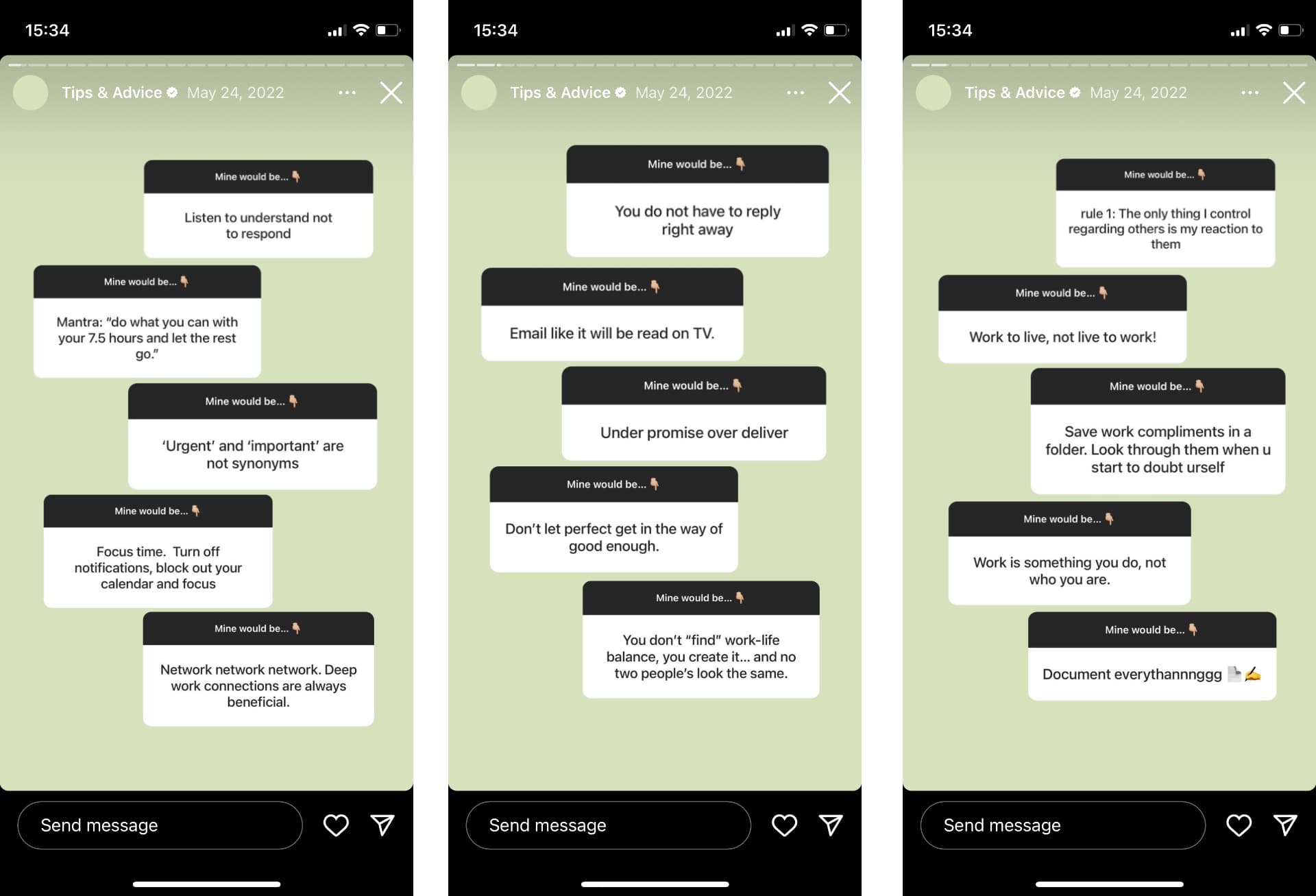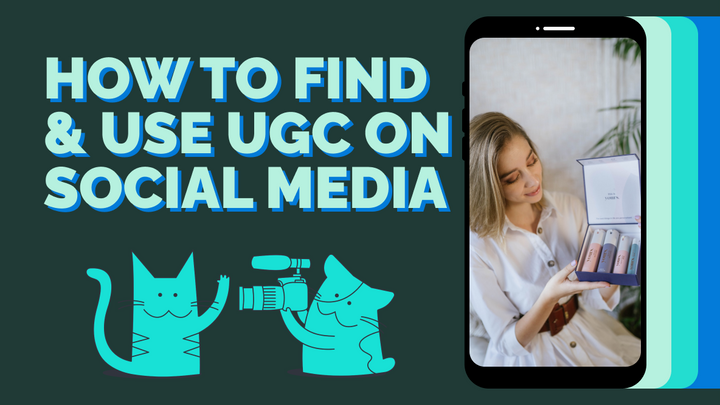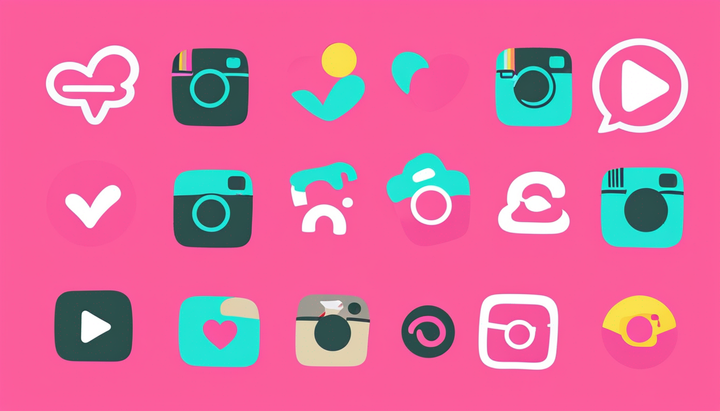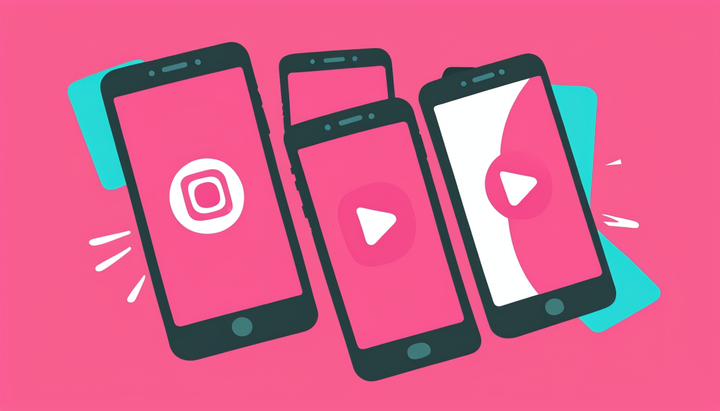How to Increase Social Media Engagement on Every Social Network
Are your social media posts engaging enough? Discover the tips and tricks to improve your social media engagement fast plus real examples.

Social media engagement is a great yardstick by which to measure your brand’s success online. Having strong social media engagement markers (likes, comments, shares, etc.) is an indicator that you’re building stronger relationships with your followers and the people who view your content.
After all, social media is meant to be a two-way street where people can engage with your brand's content. Asking the right questions in captions, creating shareable videos that get people talking, and sharing captivating content that compels a reaction out of people are all key to boosting your social media engagement and growing your following and positive brand perception on any social media platform.
In this article, we’ll share seven proven social media post ideas (with examples!) to help you boost engagement as well. Plus, we’ll discuss three additional engagement strategies to incorporate into your social media planning for the second half of 2023.
Let’s get started with some engagement ideas and inspiration.
Social Media Post Ideas for Boosting Engagement + Examples
1. Ask Questions in Your Caption
Boosting social media engagement doesn't require a ton of complicated hacks to yield a good return. Sometimes, asking a great question can help you boost engagement on your social media posts. Asking questions can allow people to share their thoughts with you, creating a more intimate environment. Plus, it can help you better understand your customers if you own a brand account. You can also learn new insights to better understand your niche.
When brands and influencers share content to educate on social media, they're perceived as the expert. However, many people who follow you also know a few tricks. So when you ask questions that allow people to share their expertise or challenge your opinions, you balance the power dynamics of social media to make it a truly social environment.
Here are some examples of question prompts for a few popular niches that you can use as inspiration for your own social media posts:
- Animals/Pet Account: What’s the funniest thing your pet has done lately?
- Business: How do you prioritize work-life balance as an entrepreneur?
- Career: What’s the best career advice you’ve ever been given?
- Entertainment: What show are you currently obsessed with?
- Fashion: Which outfit do you prefer? Left or Right?
- Food: What’s your go-to summer salad recipe?
- Gaming: What game release are you most looking forward to this summer?
- Lifestyle/Wellness: What one piece of advice would you give your younger self?
- Marketing: What’s your go-to video editing app? (😉)
- Personal Development: What’s been your favorite read of 2023?
- Personal Finance: Would you rather pay off your house or invest that money?
- Photography: Top five pieces of gear in your camera bag, go.
- Tech: What piece of new tech are you most excited to try?
- Travel: Relaxing beach vacay or multi-city adventure?
To create engaging questions to get your audience talking, focus on asking open-ended questions. You don't want to elicit a simple yes or no response. Aim to pull context out of people to share their stories or experiences. You can also ask people to fill in the blanks or complete a sentence to help channel people's creativity or personal sense of humor. Asking people to choose between two options or polling your audience can also be a way to create good engagement posts because it’s a little lower effort and can net more engagement than something that requires a full, written out response.
You can ask these questions in the caption of your post or in a more casual format, like Instagram Stories. One way to drive engagement is by sharing some of the responses to your questions as a response post or IG Stories series. Work-life balance advocate and influencer, Laura Haley (aka, @loewhaley, aka, you virtual work bestie), often asks followers for their input using the Instagram Stories question sticker:

She then shares the responses to her Stories so the whole community gets to commiserate, swap advice, share tips, and learn from each other.
2. Share User-Generated Content
If you'd like to see a rise in social media engagement, consider sharing user-generated content on your profile. It's an easy way to engage with those who are creating content about your brand for free. Plus, user-generated content acts as social proof that regular people love your product. When you re-post and share user-generated content, it encourages more people to create content about your brand.
You can encourage your followers to share their content on social media platforms by creating branded hashtags and making them visible on your bio. Adding text on your TikTok bio or Instagram bio, and directly asking for people to tag you and use your branded hashtag can be a great way to encourage more content too. You can also tag influencers or customers who create content about your brand so they get to see a boost in traffic back to their profiles, which is a good incentive for them to create more content about you.
Always ask for permission before reposting someone else's content on your profile. You can also promote user-generated content on your website or ask a content creator to leave a video or photo review on your website or product page. If someone's content doesn't match your brand's social media aesthetic, you can still engage with their post by liking and commenting on it so the content creator can feel appreciated for their efforts to share your brand on their posts.
Gymshark is pretty much king of UGC. When it comes to social media, they don't create much content in-house. Instead, they share content made by creators (who are also customers), like this:
It fits their aesthetic, is aspirational, and provides social proof all in one post. What more could you ask for?
3. Run Giveaway Posts
One of the fastest ways to boost social media engagement is to host a giveaway on your social media channels. Giveaways are a great social media marketing strategy too as if the prize is connected to your product, you could help encourage people to become paying customers. A giveaway can help you increase your brand recognition, get people to try your product, expand your social media reach, improve your brand loyalty, and boost the number of business opportunities that get sent your way.
To host a successful giveaway, you'll want to have a valuable prize that's directly tied to your business. So, avoid giving away Amazon gift cards, unless your product sells exclusively on Amazon. Offering a prize that includes your product is a good way to ensure that you build a relevant audience when building up hype for your giveaway.
You'll want to create some rules or guidelines that help you meet your business goals (or at least social media goals). For example, what do people need to do to win the prize? In this giveaway by Dezi, makeup and fashion influencer Desi Perkins’ sunglasses brand, the entry requirements are sharing your collection of Dezi shades.
This tactic is two-fold. First, it’s great exposure for the brand because thousands of people will be sharing their product and reaching an audience much larger than the brand’s owned audience. And second, it’s great for brand perception. By framing the giveaway (pun intended) “for our day 1’s,” they know they’re not attracting giveaway seekers who won’t convert into actual customers while also ensuring that contestant entrants and winners feel appreciated and validated as “true fans.”
To promote your giveaways beyond the entry requirements, you might promote your giveaway on contest or giveaway websites. You can also run an email campaign to your mailing list to boost the number of entries you get. Connecting with influencers who promote your giveaway to their audience can be a great way to see the number of entries climb too. When it comes to selecting the prize winner, you can use tools like Rafflecopter, Gleam, Woorise, and more to randomly select a winner.
Bonus tip: For even more ideas, check out this article on giveaway ideas.
4. Share Behind-the-Scenes Content
Behind-the-scenes content is a great way to build a more personal relationship with your followers. So, naturally you'll see a boost in social media engagement when you show what happens behind closed doors. People love seeing footage on social media that they never get to see in real life.
There are plenty of ways to capture that exclusive, behind-the-scenes feel. You might share a behind-the-scenes look of how production runs at your company. A day in the life of an employee or executive at your company can also showcase what the day-to-day office culture is like. An e-commerce company can showcase products being packaged up to be shipped out. If you're a course creator, you might show the behind the scenes of how a course is shot with blooper moments. And if you're an influencer, you could always create a get-ready-with-me video that shows you getting ready for the day or a big event.
When creating behind-the-scenes content, ask yourself what the goal of creating this content is when it comes to social media engagement. For example, are you trying to build up hype for an upcoming product launch or are you trying to highlight your brand's values? You should also try to make it appear as authentic as possible. Focus on finding relatable stories from various team members to passionately share aspects of what the behind-the-scenes life is really like.
Take this small business owner’s post for example:
@sunmilkshop Replying to @Madison Peters ♬ original sound - Sun Milk Shop
She shares a behind the scenes of packing up orders from her TikTok shop. This is a fun format for sharing her product with new viewers (she got plenty of comments asking about different designs in her shop). It also reaches the market of other entrepreneurs as she shares the pros and cons of using the TikTok shop, creating helpful, educational content for small business owners.
5. Collaborate with Influencers or Partners
Social media platforms have tons of influencers, brands, and public figures you can leverage to improve your social media engagement. Tapping into someone else's larger audience can mean more engagement for your content. However, it's not just about picking an influencer with a large audience; you also want to choose someone from a relevant industry. So, if you’re a fashion brand, collaborate with a fashion influencer, etc..
You can collaborate with influencers or partners to create product reviews, host giveaways, run a contest, create user-generated content, run social media takeovers, use your branded hashtag, do a joint product launch, or join in on a live stream.
Lulus has an ambassador program that they use to partner with influencers and creators to create content like this:
Their ambassadors create content featuring their "collections" from Lulus' product line, and both the brand and the creator can then share the images and videos.
6. Share Infographics or Visual Data
While videos have grown in popularity on social media, you can also boost your engagement rate with infographics and visual data. This is true across multiple platforms. Despite what Adam Mosseri might want you to believe, Instagram photo posts still have higher engagement rates than Instagram video posts. And Instagram carousel posts do even better than photo posts.
So, creating a multi-post thread with infographics or visual data can perform really well in terms of social media engagement. Plus, you can educate your audience easily, give bite-sized content that performs well on social media, and increase the virality of your posts (people love sharing infographics and stats).
You can use colorful graphics or simply add text to images. However you choose to present your visual data, make sure to keep the text on the images and use large, bold font for the most important data so your graphics are readable at a glance.
Here’s an example from HubSpot:
This post presents relevant information to their target audience (marketing professionals) in a compelling, easy to digest format. Even better, they start with original data they sourced, which boost their credibility.
7. Host Live Q&A Sessions or AMAs
Your engagement rate can see a nice upward climb from real-time interaction through live Q&A sessions. If you don't have a ton of time to spend on content marketing and creation, a live Q&A session could be an easy way to produce high value content while saving time on video editing. You can ask people to comment with their questions during your AMA, which will boost the number of positive interactions your brand gets while also building customer loyalty (especially when people hear you answer their question).
Promote your live sessions in advance on your social media platforms to direct all your social media users to the platform where you’ll be hosting the Live. This flower gardening account on YouTube, for example, uses YouTube Shorts to promote their live Q&A and collect questions to answer during the event:
You can also experiment with other channels, like promoting the link with a countdown in your Instagram Stories or sharing a save the date for the event over email. You can even add a header tag on your website promoting your Q&A session or AMA. Multi-channel promotion will net you a higher turnout for your event.
To keep your engagement rate high during the Live event, interact with the chat, answering questions, responding to comments, and just making conversation. Some ideas include relevant industry news, trends, or general advice to help provide value to your audience. By answering questions people ask in your AMA and responding to them by their name, you'll show that you are paying attention to comments so people will feel encouraged to interact, boosting engagement throughout the event and after.
Additional Engagement Earning Strategies for Social Media
1. Know your audience
To make your social media engagement strategy work effectively you need to have a deep understanding of who your audience is and where they are online. You'll want to carefully research and understand your target audience. Identify your target personas that you want to reach and think about what their interests and problems are. Having insight into what your ideal audience wants will help you create valuable content for them.
You also want to look at your existing audience and see if they fit with this target persona. On every social media platform, you'll find data on audience insights and analytics to help you better understand your followers. For example, on Instagram, you can see what content generates the best reach as well as key demographic data for existing followers, like age range, gender ratio, and which cities you’re reaching. Optimizing your social media accounts posting schedules around your specific audience’s peak hours will also help ensure higher social engagement.
After you have a better understanding of how your audience interacts with your content, you can tailor your content for them. For example, if you find your comments are flooded with questions, you can answer those questions in future videos. If certain keywords or phrases show up in comments a lot, you can use the same language your followers use to communicate in your content too. By focusing on sharing your expertise and providing support and value to your customers and followers you'll see a boost in all of your social media engagement efforts.
2. Monitor and Analyze Performance
To monitor your engagement rate, identify and then track the most important engagement metrics on your post to analyze performance. For example, if you’re interested in boosting reach, you’ll want to track shares and new profile visits more than other metrics like comments or likes. You can typically see overviews of this data using in-app or third-party analytics tools. For a more granular understanding of what type of content generates the best engagement rates, experiment often and compare the results to your general performance.
This is really the secret to success when looking to increase engagement. The more you experiment, the more data you have to identify successful content strategies. You'll learn pretty quickly what types of posts perform well and which don't. So, if you find content around popular trends does well, you might lean into creating more content about trends, news, or topics people are actively talking about.
Incorporating experimentation into your social media content strategy better prepares you for big shifts in the social media landscape. Being flexible and constantly trying new things means that you’ll quickly notice when old, “tried and true” tactics aren’t working anymore and be able to quickly pivot to accommodate new features and trend cycles.
You can use social media analytics tools to gain insights to better analyze the performance of your content. Tools like Sprout Social, Buffer, Hootsuite, or even the built-in analytics features on social media platforms can help you understand how your metrics are performing per content created. For example, you'll see how many followers each piece of content you created grew by. Overall, data will help you know what direction to go into when creating content.
3. Incorporate Platform-Specific SEO
SEO, or search engine optimization, is no longer just for websites. Most social media channels are being used as a search engine in at least some capacity by users. That means that being strategic and optimizing your posts and profiles for search can boost your organic reach on social, impacting your overall engagement.
One way to improve your social media SEO is with strategic hashtag usage. When choosing hashtags for your posts, you'll want to ensure that they're relevant to your post and brand. So, avoid using the same three or four hashtags for every post, even if they're popular for your niche. Be sparing and intentional with your hashtags and supplement hashtag use with trending audio for Reels and TikTok.
Another way to optimize your social media channels for search is by researching and incorporating keywords into your content creation process. While the tactics vary by platform (check out our guide for Instagram SEO here and TikTok SEO here), the best practices remain the same:
- Use the in-app search function to conduct your keyword research. This will give you the most accurate idea of what keywords are trending in your space on that specific channel. A keyword that does well on Instagram might have no search volume on TikTok. And traditional keyword research tools for search engines like Google are almost completely irrelevant when considering social media SEO.
- Don’t keyword stuff (at least not in a noticeable way). Use your target keywords to guide your content ideation and creation. Incorporate them into your post captions and on-screen text for videos, but don’t bombard your viewers with word salad.
- Don’t forget to optimize your profile! Make the most of your bio. You can often change your channel name (not your @, but the display name for your profile) to include a relevant keyword, like “Skincare by Chanel” rather than just “Chanel Smith,” if your account focus is skincare. Incorporate keywords into your bio description as well, as long as they’re relevant and make contextual sense.
Conclusion
Coming up with engagement post ideas for your social media channels can help you see a rise in social media engagement on all your social media posts. Your social media performance will depend on how many comments, shares, and likes your posts get so seeing a boost in social engagement is always important. Creating videos that stand out and captivate your followers is key. Try using Kapwing's social media video editor to help you create more videos faster.
Additional Resources:
- How to 10x Your Content Creation (Without 10x the Work)
- The Ultimate Guide to All Social Media Image and Video Aspect Ratios
- How to Make Money on Social Media in 2023
- How to Avoid Social Media Burnout by Repurposing Content
- Dark Social: What Is It and How to Measure It?









